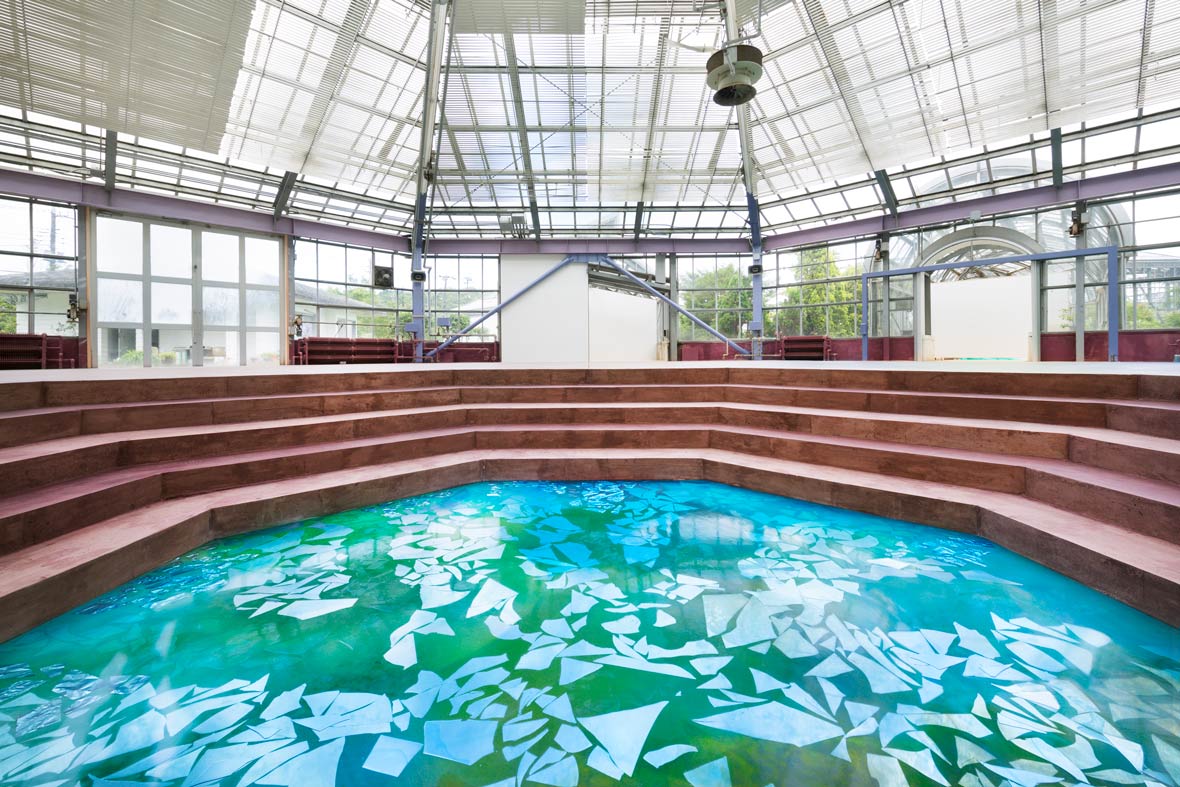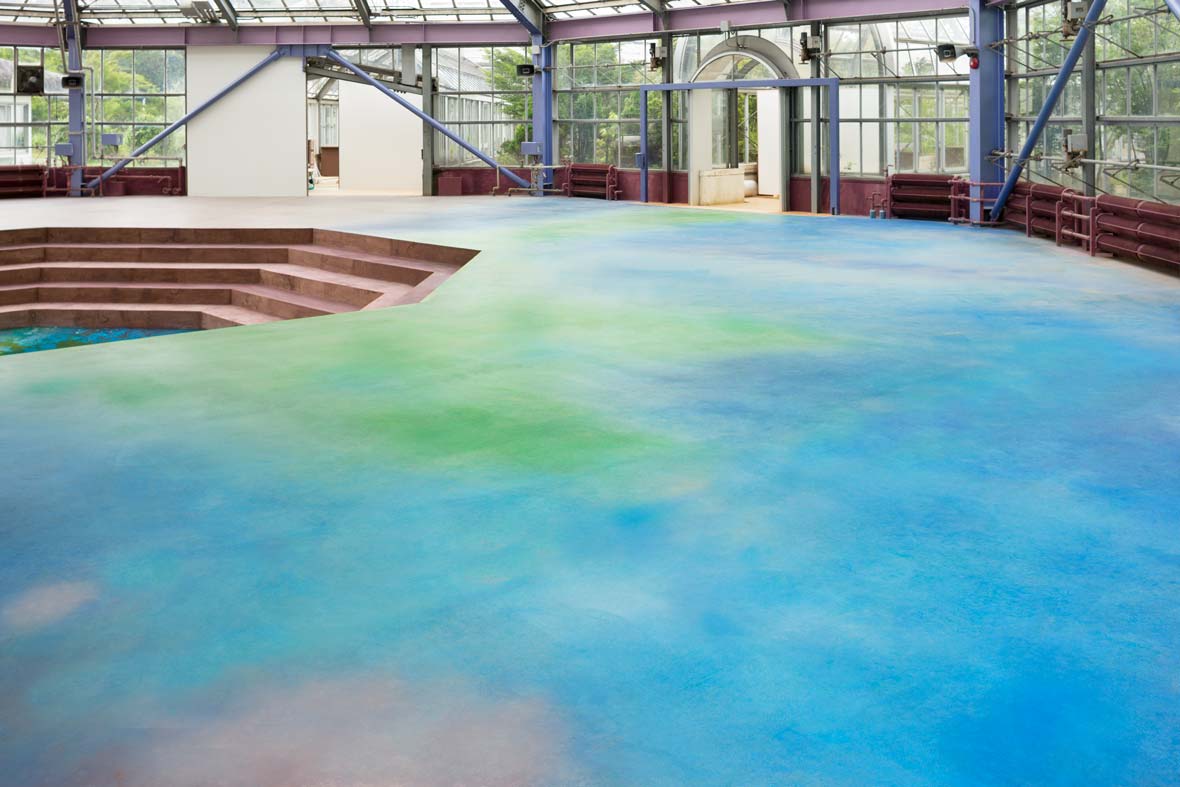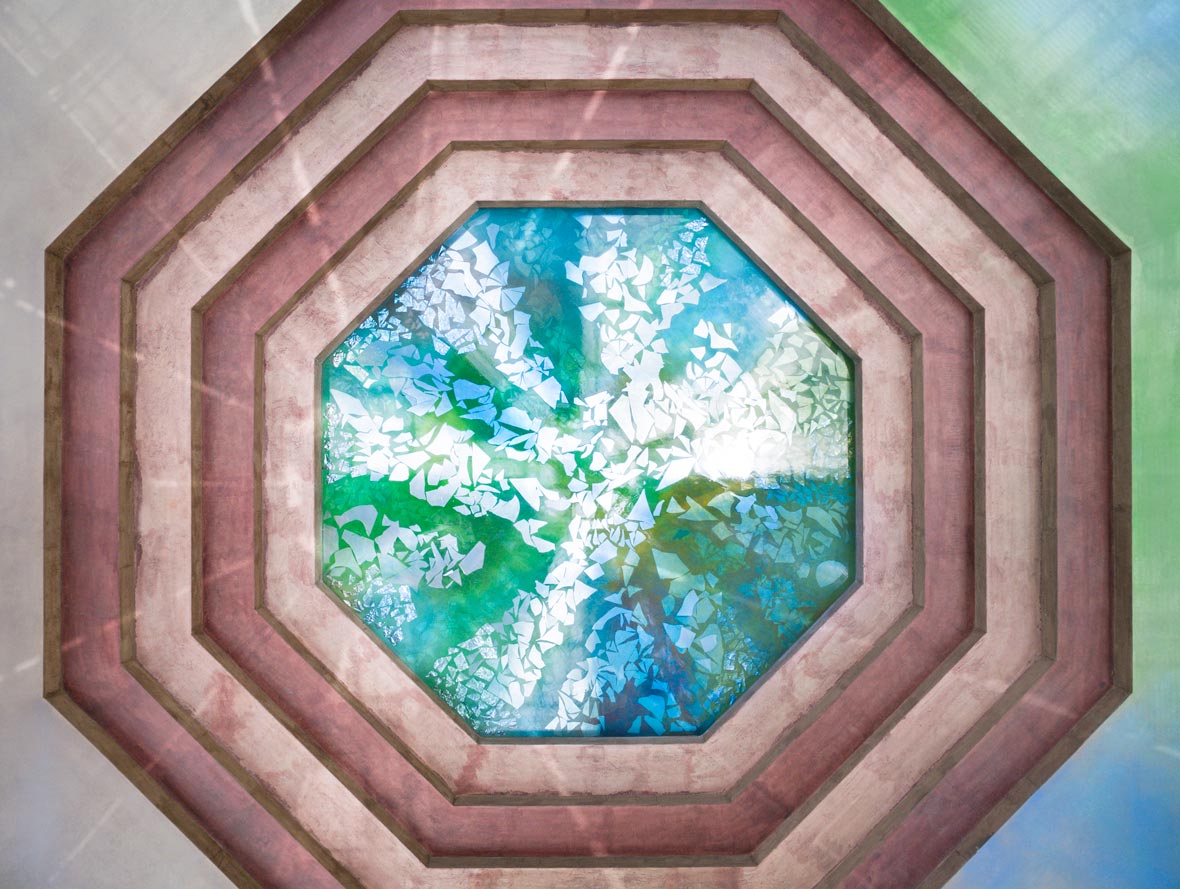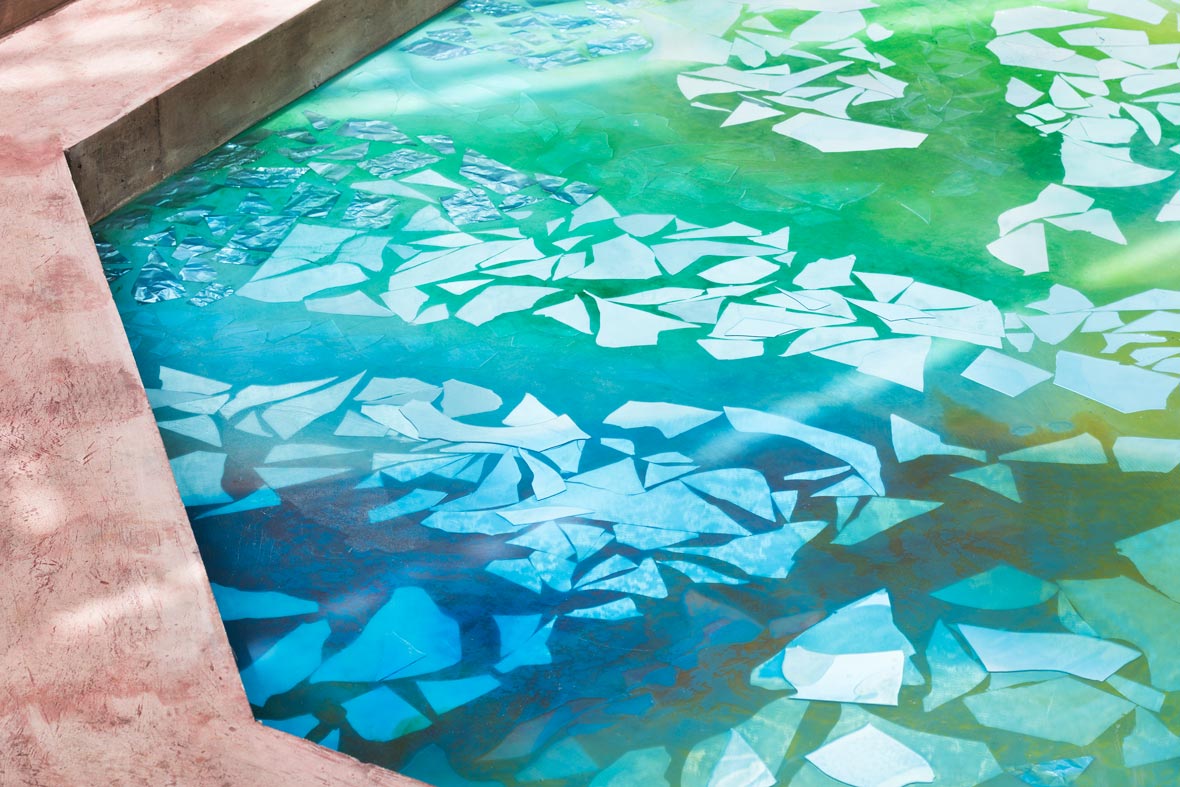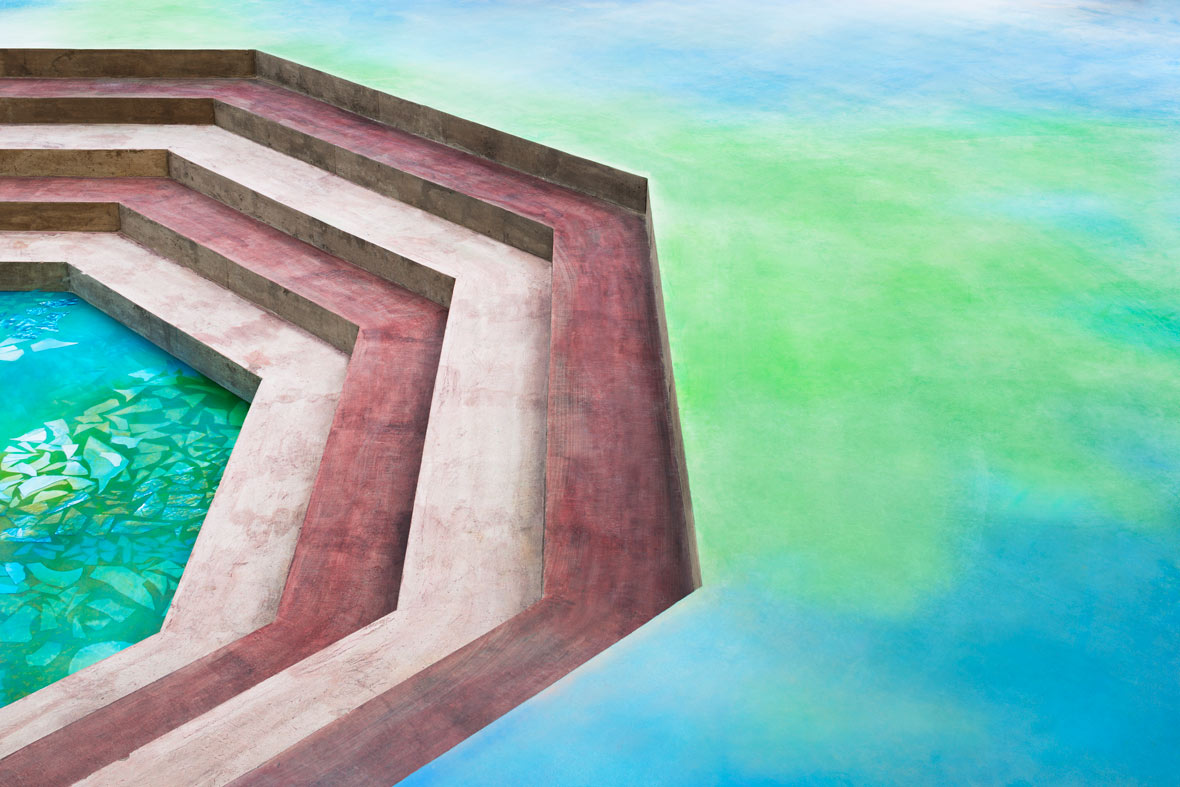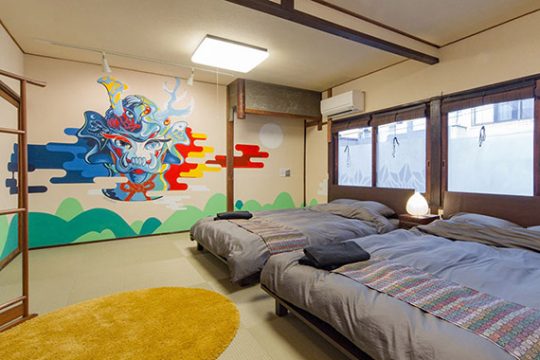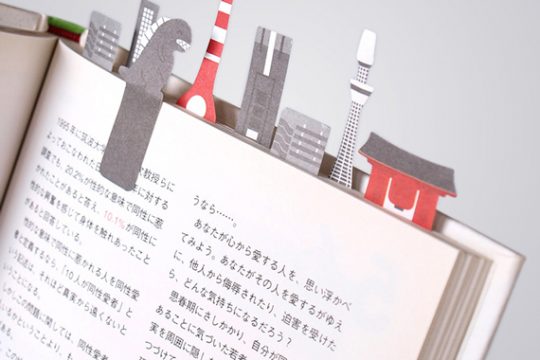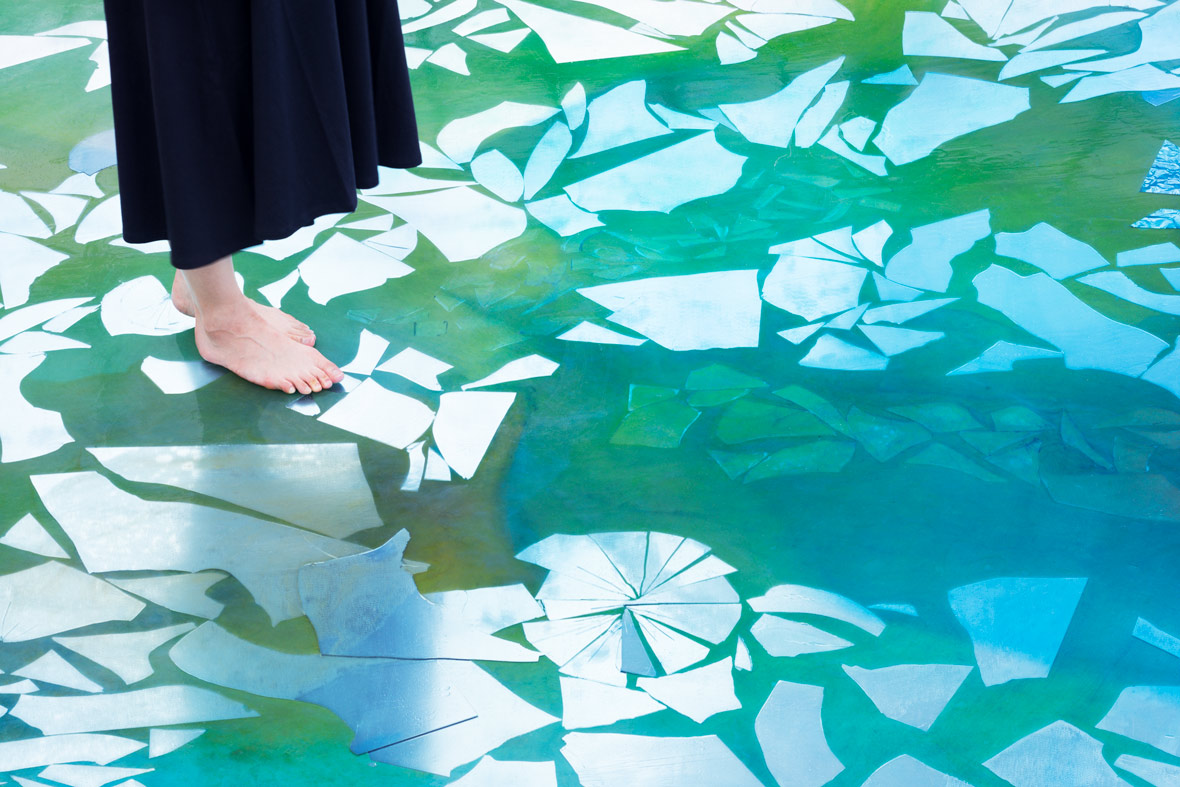
In the mountainous town of Hakone, a scenic waypoint between Tokyo and Kyoto, lies Lake Ashi. Boasting a stunning view of Mt. Fuji, numerous hot springs, and an abundance of natural hiking trails, the lake draws many visitors seeking a slice of tranquility. It’s here where the award-winning Tokyo-based design firm Moriuyiki Ochiai Architects unveiled their latest project.
美丽的芦之湖位于箱根,是一个地处东京和京都之间的山间小镇。这里除了富士山的壮丽景色,还有众多的温泉和自然远足径,吸引着许多寻求宁静的游客。Moriyuki Ochiai Architects,这家屡获大奖的东京建筑设计公司,在这里揭幕了他们的最新设计项目。
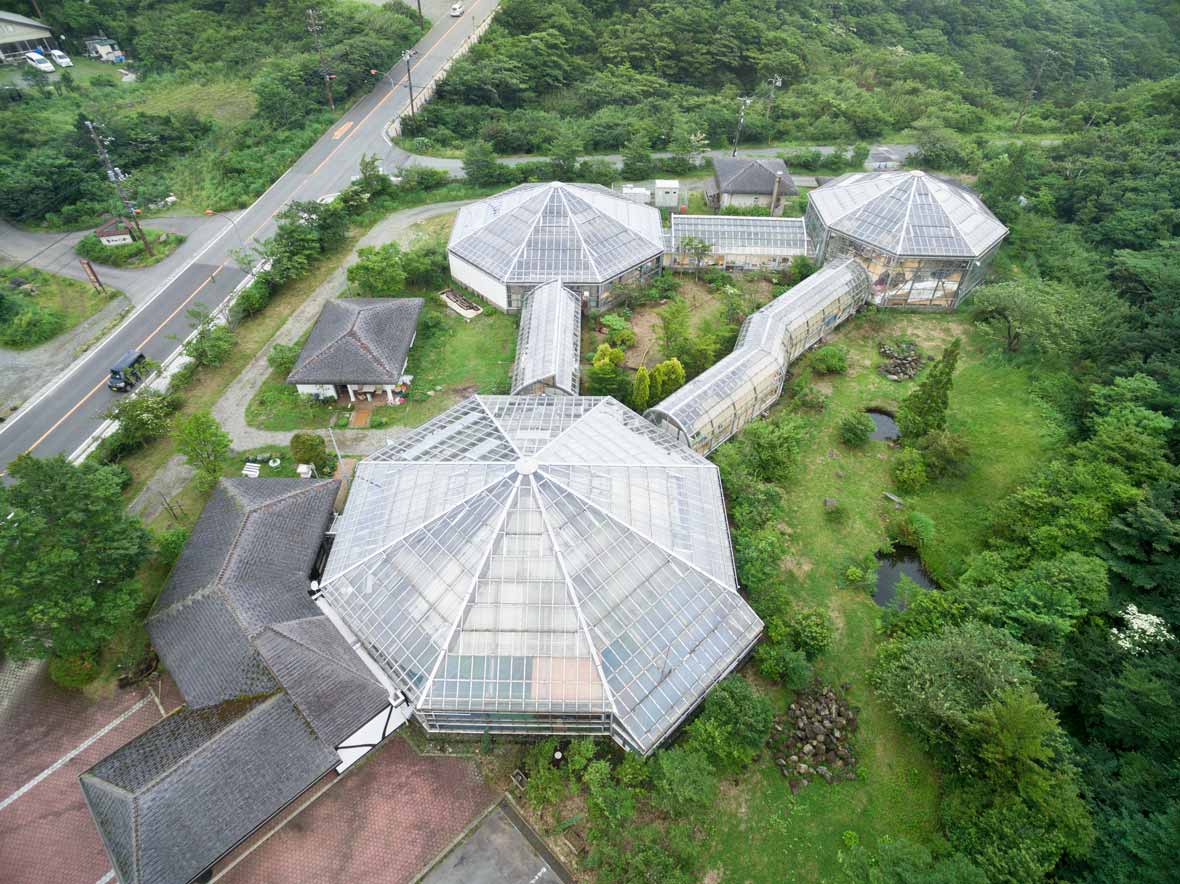
The Miruyiki Ochiai design team was tasked with renovating the domed foyer of an ex-botanical garden and turning it into a multifunctional space that’s able to accommodate a kitchen, dining space, and an area for live performances and art exhibitions. Using concrete, they laid out a new foundation for the space and constructed an octagonal amphitheater that serves as the centerpiece of this renovation project.
Moriyuki Ochiai Architects的设计团队需要改造一个旧植物园的圆顶大厅,将它变成一个由厨房,餐厅和一个展览演出区域组成的多功能空间。 团队用混凝土为整个空间构筑了新的基层,并建造了一个八角形的露天剧场,作为整个项目的标志性建筑。
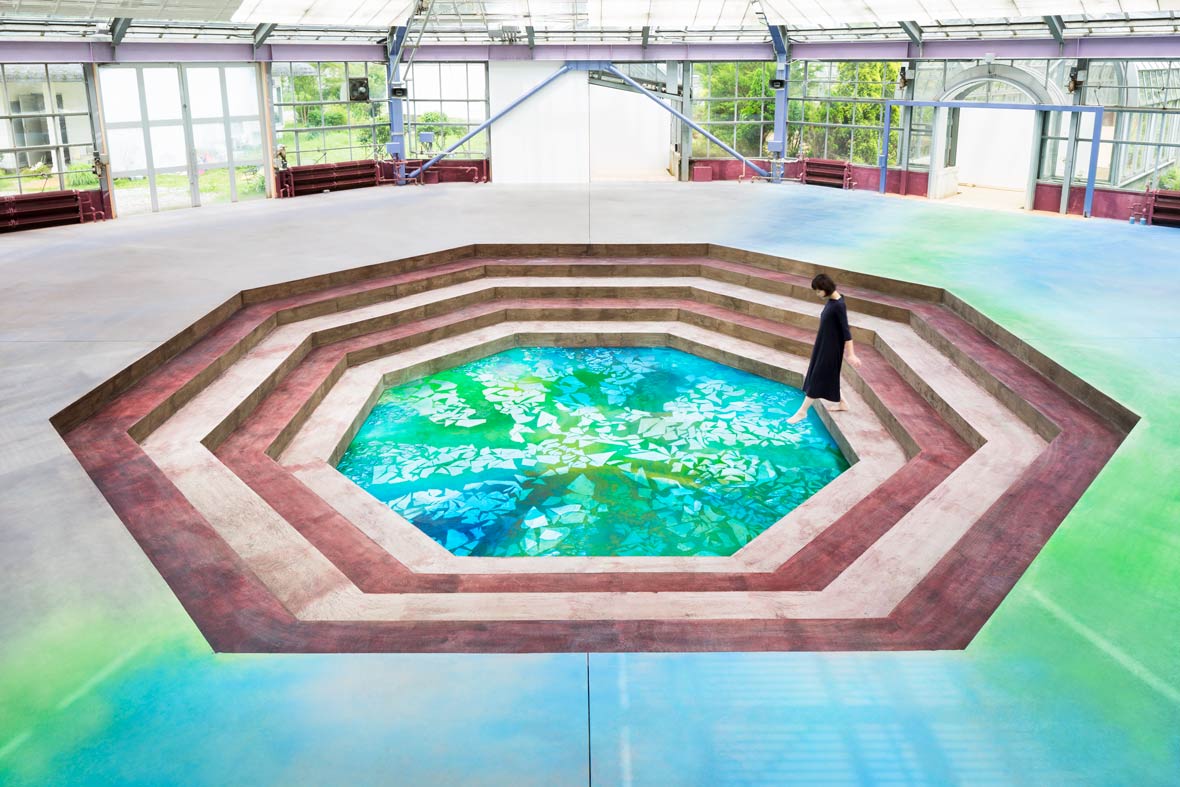
With the goal of paying homage to water, which has lent its undeniable influence to the surrounding environment, they intended for the amphitheater stage to appear as if it were a well of water. To achieve this, they spread a transparent resin at the bottom of the amphitheater, which sits over an assortment of glass shards, mirror fragments, and metal plates. Tiered seating surrounds the spring, forming an intimate performance space. To further invoke imagery of water, specifically that of Lake Ashi, they injected a vibrant gradation of colors beneath the resin; this is to represent the different colors of the surrounding trees that reflect off the lake’s surface as the seasons change. The end result of Moriuyiki Ochiai Architect’s thoughtful redesign is a space that doesn’t detract from the beauties of the surrounding landscape. The project stands proudly as a symbol of the symbiotic bond that exists between man and nature.
由于水元素对当地环境有着十分重要的影响,因此,设计师以水井为灵感来设计了露天剧场的舞台。为了实现这一设想,他们在露天剧场的底部布满透明树脂,又在下面放满了玻璃碎片、镜子碎片和金属板。分层式的座位设计围绕着“水井”分布,形成一个小型表演空间。为了进一步突显水元素(尤其是芦之湖的水元素)这一意象,他们在透明树脂之下布满渐变的色彩层,以表达芦之湖四周的树木随季节变化映现在湖面时呈现的不同色彩。Moriyuki Ochiai Architects的这一设计并不会将人们的目光从周围的美丽自然景观中移开,恰恰相反,它代表了人与自然之间存在着的共生联系。
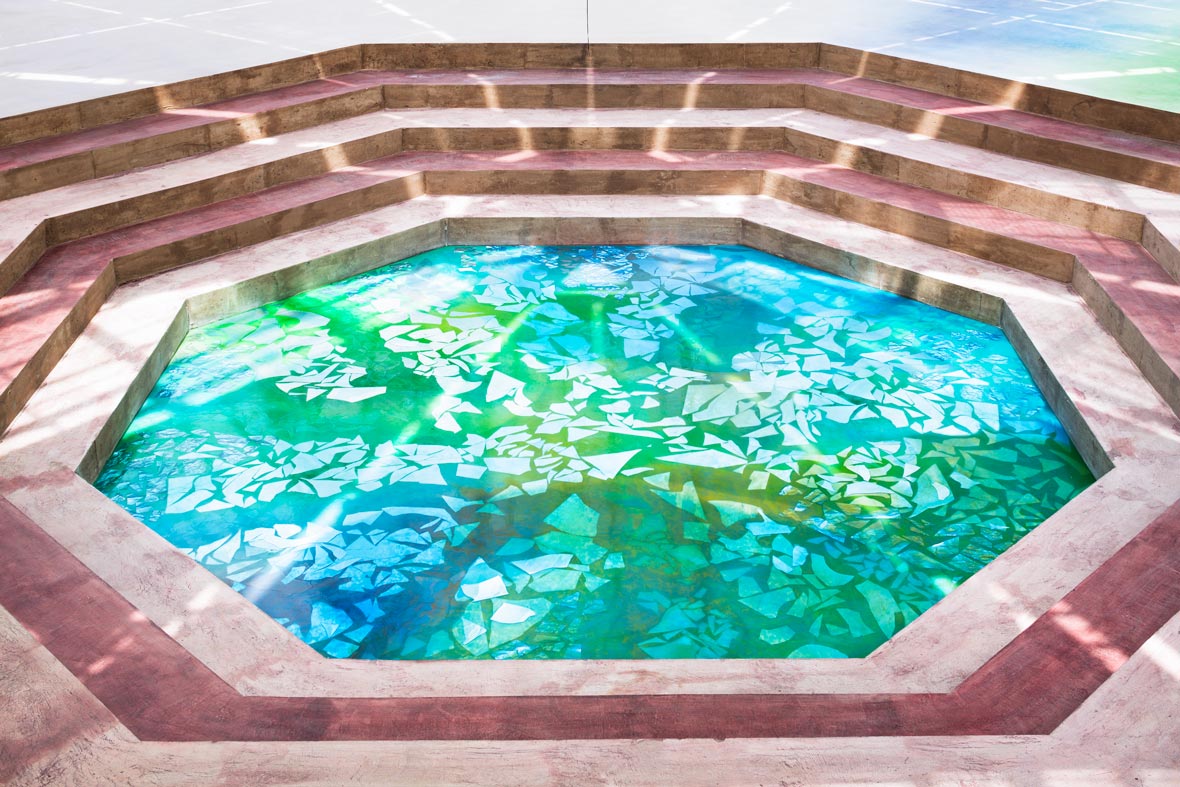
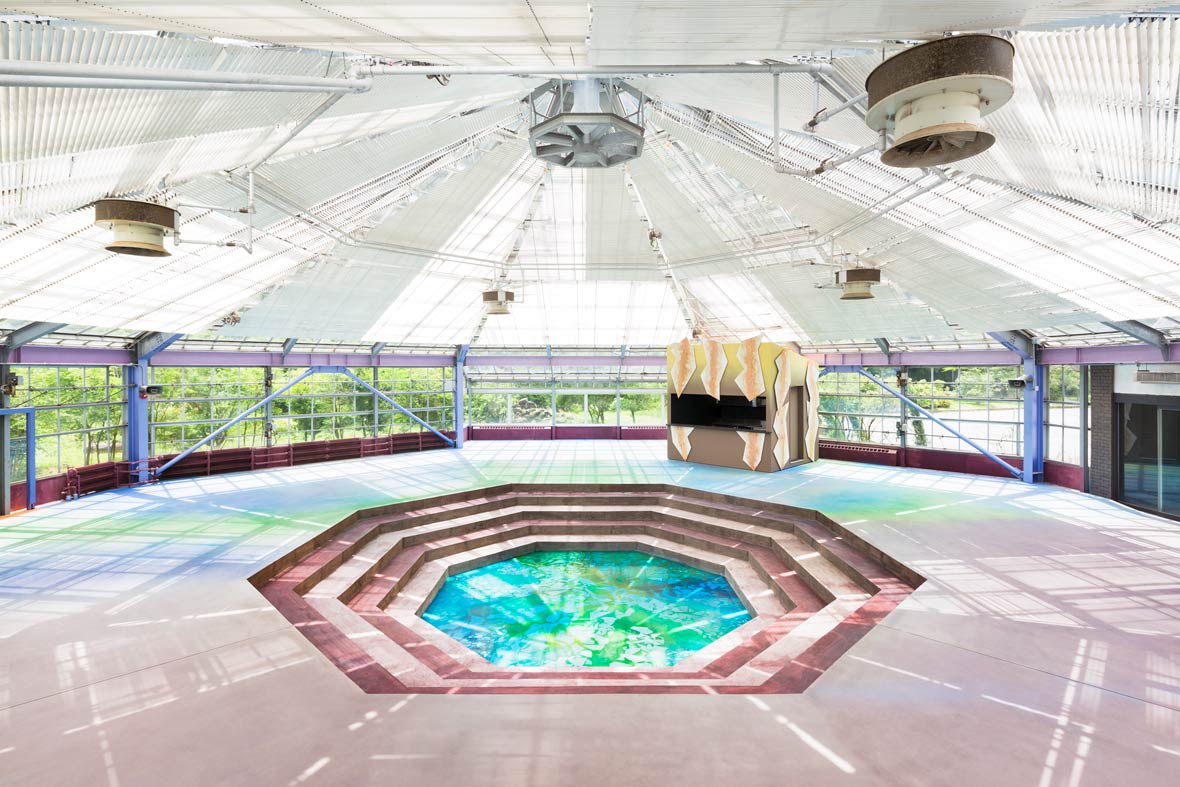
Website: moriyukiochiai.com
Facebook: ~/moriyuki-ochiai-architects
Contributor: David Yen
Photographer: Takumi Ota
Images Courtesy of Moriyuki Ochiai Architects
网站: moriyukiochiai.com
脸书: ~/moriyuki-ochiai-architects
供稿人: David Yen
摄影师: Takumi Ota
图片由Moriyuki Ochiai Architects提供

